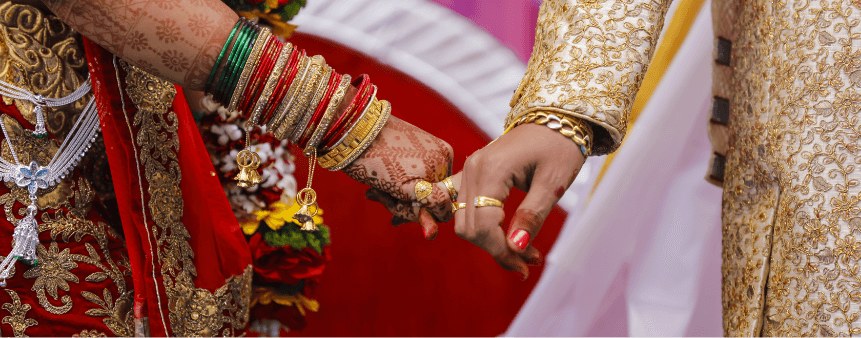Talk to India's best Astrologers
First Consultation at ₹1 only
Login
Enter your mobile number
Ketu Mantra is a combination of words or lyrics dedicated to Lord Ketu so that he is always in peace and provides a positive shadow on our lives. In Hindu mythology, Ketu is believed to be the detached body part (head) of the demon Swarbhanu. To understand them fully, let’s explore the significance and types of Ketu mantras.
Different types of Ketu mantras are chanted to ask for this planet's blessings and positive energies. Explore the various Ketu mantra below:
The Ketu Beej Mantra holds great significance in ancient astrology books. Chanting the Ketu Beej mantra 108 times daily, or 18000 within 40 days, is recommended. The Ketu beej mantra in English with meaning is:
"ॐ स्रां स्रीं स्रौं सः केतवे नमः"
“Om Sraam Sreem Sraum Sah Ketave Namah”
Meaning: "Om, I bow to Ketu, who represents the transformative energies of the universe."
Benefits: Chanting the Ketu Beej Mantra benefits with the favours of Lord Ketu. It can help reduce the impacts of Ketu Dosha in one's birth chart and balance its energies. The mantra brings clarity of thought, spiritual growth, and insight into one's life. It is also believed to protect against negative influences, promote inner peace, and enhance focus.
The Ketu Vedic Mantra holds a deep significance in Vedic scriptures and is chanted to request the blessings and positive influence of the planet Ketu. The Ketu Vedic Mantra is advised to chant in the northeast direction.
"ॐ केतवे नमः"
“Om Ketave Namah”
Meaning: "Om, I bow to Ketu, the planet associated with spiritual growth and transformation."
Benefits: Chanting the om kem ketave namah benefits calms the mind, and enhances spiritual awareness. The mantra is believed to keep away the malefic effects of Ketu in one's birth chart and balance its energies. It is also associated with improving wisdom and strength. Individuals may experience a deeper connection with their spiritual self and receive the blessings of Ketu.
The Ketu Gayatri Mantra is powerful. It is chanted 17000 times, facing the Ketu idol in the Southeast direction. Start on a Tuesday during Shukla Paksha. The Ketu Gayatri Mantra is:
"ॐ चित्रगुप्ताय विद्महे सर्पराजाय धीमहि, तन्नो केतुः प्रचोदयात्"
“Om Chitraguptaya Vidmahe Sarparajaya Dhimahi, Tanno Ketuḥ Prachodayat”
Meaning: "Om, let us meditate on the Divine Keeper of Records, the King of Serpents. May Ketu inspire and guide us."
Benefits: Chanting the Ketu Gayatri Mantra is believed to enhance positivity and bring stability to life. Use this mantra to manage health issues and avoid unexpected accidents and injuries. Those under Ketu Mahadasha can greatly benefit from chanting this mantra.
The Ketu Moola Mantra is a root mantra that effectively captures the essence of Ketu's energy and is believed to have a deep impact on one's life. Chant this mantra 108 times when recommended by Pandits. It is recommended that the mantra be chanted facing the southwest direction every morning. The Ketu Moola Mantra is:
"ॐ स्रां स्रीं स्रौं सः केतवे नमः"
“Om Sraam Sreem Sraum Sah Ketave Namah”
Meaning: Om, I bow to Ketu, the one associated with the syllables Sraam, Sreem, and Sraum.
Benefits: Chanting the Ketu Moola Mantra is believed to remove the negative effects of Ketu and enhance psychic abilities. The mantra is also believed to support one's journey towards self-realisation. Regular practice of the Ketu Moola Mantra with devotion can bring positive shifts in various aspects of life, such as love, marriage, and career.
The Ketu Puranokta Mantra is mentioned in the ancient Puranas and is associated with the spiritual energy represented by Ketu. Chant this mantra 7000 times in 11 days, facing southwest. The Ketu Puranokta Mantra is:
"पलाश पुष्प सङ्काशं तारकाग्रह मस्तकम्
रौद्रं रौद्रात्मकं गोरं तं केतुं प्रणमाम्यहम्॥"
“Palaasa Pushpa Sankaasam - Thaarakagraha Masthakam
Rowdhram Rowdhraathmakam Go'ram - Tham Kethum PranamaamYaham”
Meaning: I offer my salutations to Ketu, who resembles the blossom of the Palaasha flower, which is situated at the head of its spiritual body, who is fierce and terrifying in appearance, and who is the image of Rudra.
Benefits: Chanting the Ketu mantra benefits includes eliminating Ketu’s negative shadow from your Kundli. The mantra is believed to enhance intuition, wisdom, and inner strength. By attracting the blessings of Ketu through this mantra, begin on a path of spiritual answers and connect more with God.
Ketu, known as the "South Node of the Moon," holds a unique place in Vedic astrology and is considered both a shadow planet and a spiritual force. It represents karmic patterns, past lives, and spiritual evolution. Holding immense significance in Vedic astrology, it is believed to represent the spiritual and unanswered aspects of one's existence.
Chanting the Ketu Jaap mantra is believed to remove the harmful effects of Ketu and enhance its positive traits. It balances the energies associated with Ketu and brings about spiritual growth and good changes. Ketu is known to have both positive and negative influences on individuals. The Ketu mantra is believed to protect against the negative influences of Ketu, such as accidents, sudden losses, and health issues.
The chanting of the Ketu mantra is considered a powerful spiritual practice that helps individuals connect with the energy and blessings of Ketu. To begin the chant, it is essential to create a calm environment free from distractions.
